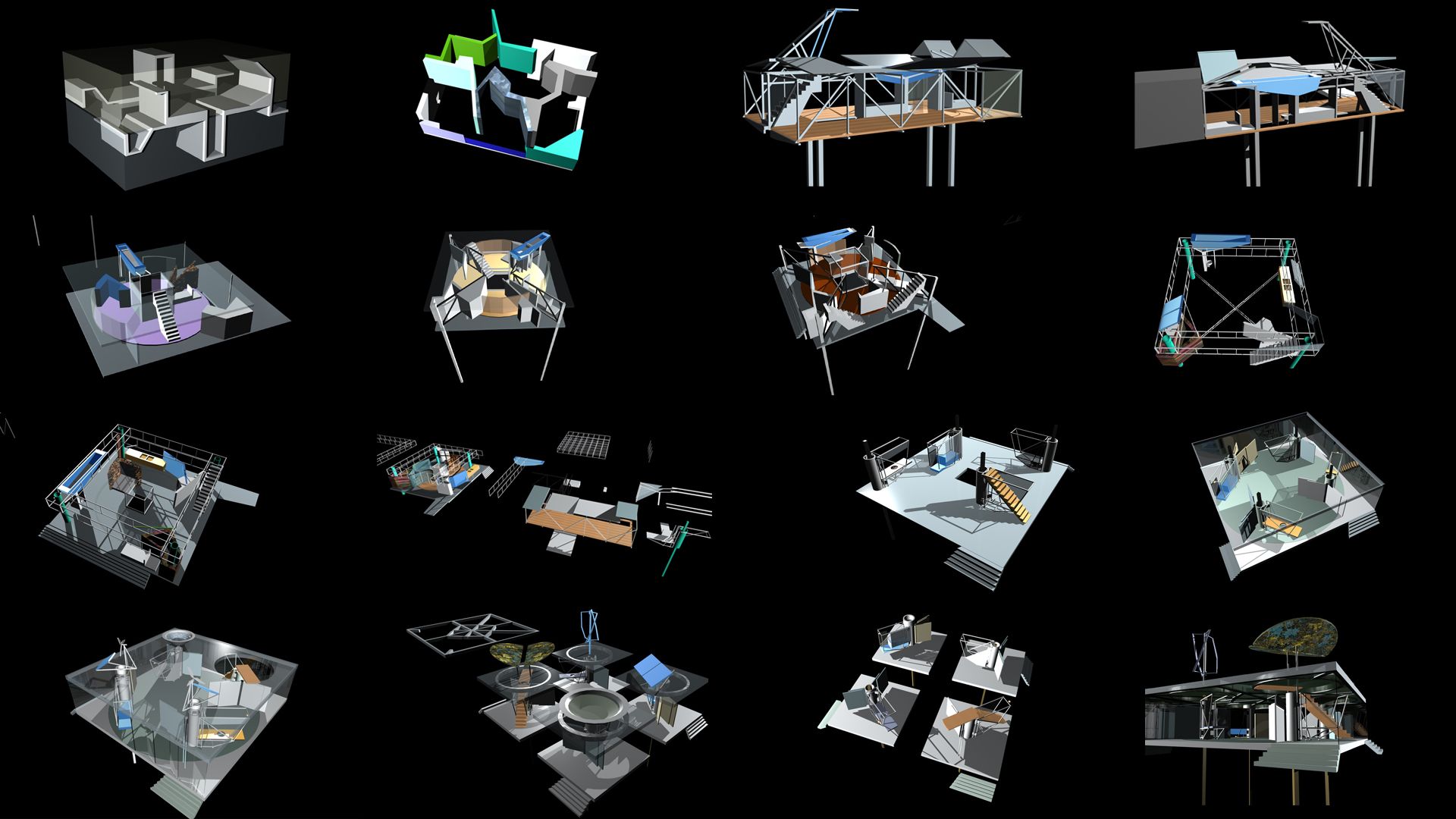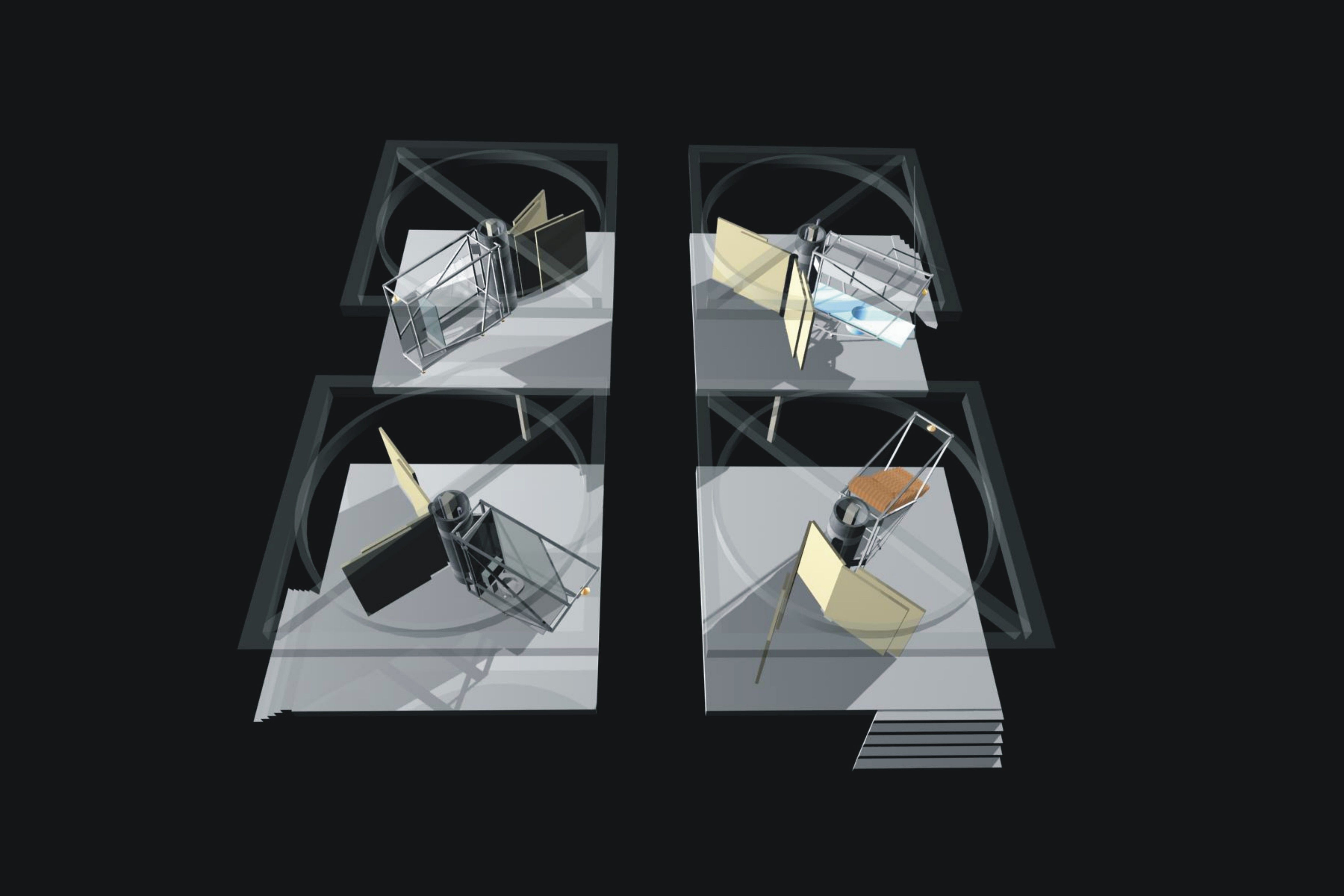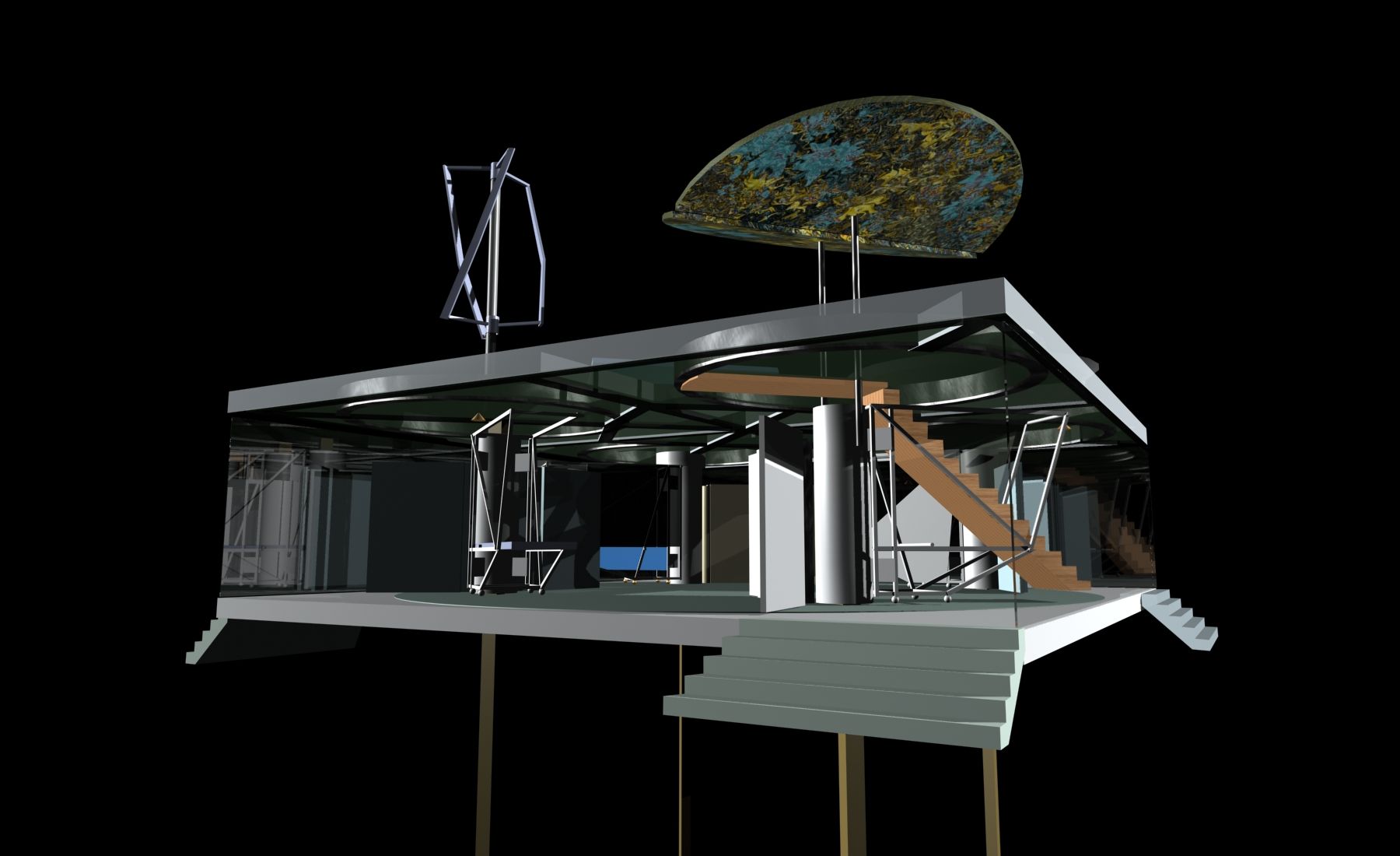Evolution of design - Domino feedback

Project Domino Feedback
Design: 2006
innovation study installation and space. Variation and selection
The design of Domino Feedback was to be energy efficient. This was achieved by looking at the installation technique in another way.
In the twentieth century, many installation techniques were added to the building process. Around 1900, this was practically non-existent. Now, installation technique makes up thirty to forty percent of the building costs. Furthermore, pipes and building construction are interwoven. The building process has become more complex and chaotic. Mutual dependence on partial functions during construction must be minimized. It attempted to disconnect and unravel the installation technique as much as possible from the design process concerning the architectural parts. Pipes can be installed in a new and straightforward way. More pre-fabricated material is used. he advantages are the efficiency of the building process and the possibility of size reduction and energy reduction.
The results of the residence dwelling of Palladio Feedback eventually were transformed because of free energy. Energy savings are established because of free energy. By making this standard, installation techniques, as well as other energy savings, are directed. The installation technique depends on the architectural position (4 poles with no foundation; in Holland, most houses are built on poles). The production method is changed by using column pre-fabrication. The dwelling consists of:
1. Floor
2. Roof
3. Bearing column, including installation technique, and the wall as a partition.
4. Free energy


The bearing column is a module of installation technique and spatial partition. The user elements include a bath, douche, toilet, kitchen, and stairs. The hidden areas in the columns are for pipes for rainwater and sewage. Flexible pipes make this a possibility. The columns can be rotated and offer the user the opportunity to create their own space and adjust it at a later time. The dwelling can be expanded by adding a quarter of the existing house. A quarter house is a standard column with a modular unit that can be provided with extra user facilities.
The architectonical space is determined by the installation technique. Residents can answer this. Feedback means layouts that influence each other and react to the free energy for this dwelling. In Palladio Feedback, the free energy returns from the Unavowable Community to our project. Sun, wind, and water are seen technologically in this project. Free energy offers the possibility to make the use of the dwelling more economical. This means less energy consumption and a smaller footprint in the future.
The footprint is a global calculation model in which materials, energy, etc., and production are taken into account, so the personal footprint can be calculated per product (a brick or house) or per individual. With this footprint, it is helpful to compare it to other products in an ecological sense.
The result shows that it is not about improving quality in office projects, with words such as flexibility, specific areas, and thematic areas, but about the spatial change resulting from bearing words that will guide the future: free energy and energy savings.




